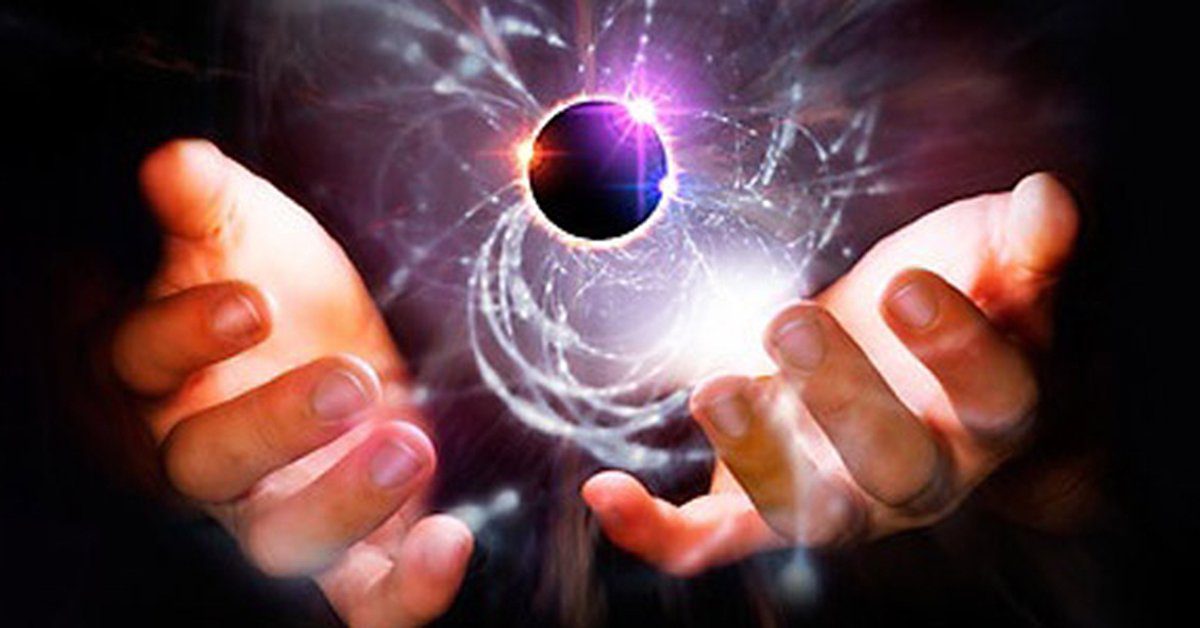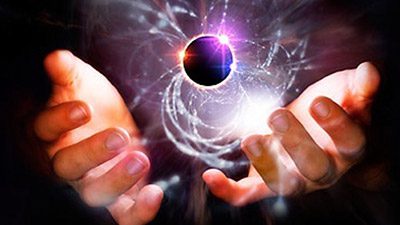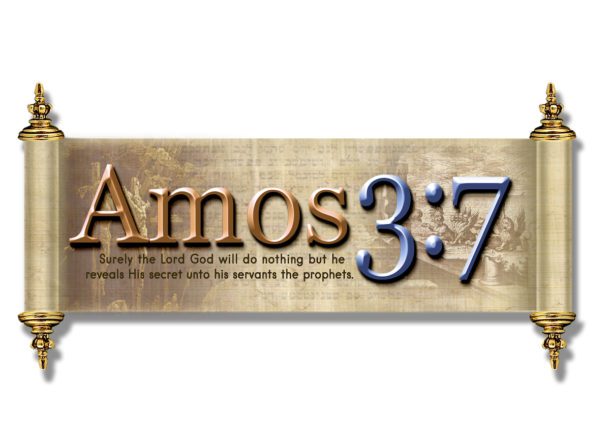
There has been an explosion in the intensity of the conversation regarding the creation/evolution debate in the last few years—but not where one might expect. It would make sense that the intensity of this discussion would continue to elevate between the world and the Church, but that is not where the fire is raging. The flames are being stoked by those within evangelical circles. Not only are there many who are demanding that Christians must embrace evolution in its various forms, some are also demanding that Adam and Eve were either evolved from ape-like creatures or that they did not even exist. These are the issues involved in the discussions surrounding theistic evolution.
In talking about this topic, there are two important points for readers to remember. First, make sure that the meaning of the term theistic evolution is clear. Unfortunately, there is a great deal of intentionally ambiguous language used by different groups within the discussion. There are those (who may believe in God) who fully believe in the idea that humans evolved from apes and that the universe began 14 billion years ago with a big bang, yet who will look people in the eye and say, “I am not a theistic evolutionist.”
Second, readers engaging in discussions with those who hold evolutionary ideas should examine carefully what these people mean by the terms they use (e.g., theistic evolution, Intelligent Design, and so on). This examination should be done in a loving manner without making assumptions based on past experiences (cf., 2 Timothy 2:24–26).
Defining the Terms
The word evolution can certainly have different meanings in different contexts. It is important to define the terms, but many Christians who believe in evolutionary ideas use other terms that must be carefully uncovered with probing questions. To really understand this concept, it is helpful to think of a continuum. On one end is something close to a deistic view of God’s role in nature and on the other end is a God constantly tinkering with His creation over billions of years to bring about His plans. A very basic way of understanding evolution is simply as change over long periods of time (i.e., hundreds of thousands to millions of years). But there is often a one-dimensional approach to thinking about evolution—the biological dimension. I would like to extend the discussion beyond that first dimension, however, to include the three basic forms of evolution: cosmological, geological, and biological (see chart that follows).1
Those whose views would fit within this continuum would generally agree on the following: 1) the universe is approximately 14 billion years old; 2) the big bang explains the origin of the universe; 3) the earth formed gradually beginning about 4.5 billion years ago; 4) life evolved on the earth as chemicals interacted to form the first “living” organism; and 5) organisms increased in complexity over time with all life on earth sharing a common ancestor. There are certainly those who would say that God guided each of these processes to different degrees, but they believe in a universe and planet that is billions of years old and in life progressing through gradual change to the complexity and variety seen today.
With this understanding, and knowing that many would reject the specific label, a theistic evolutionist is one who believes that God providentially acted at some point(s) in history to bring about the world as seen today. The degree of involvement is the only disagreement. Some may suggest that cosmological and geological evolution have occurred in “natural” ways while God was more intimately involved in the biological evolution, but all ascribe to some form of evolution.
| Theistic Evolution Continuum | ||
|---|---|---|
|
Cosmological Big Bang 13.7 Billion Years Stellar Evolution |
God caused the big bang and allowed natural processes to form the universe without guidance. | God constantly guides the processes forming the universe. |
|
Geological Nebular Hypothesis 4.5 Billion Years Extent and Nature of the Flood |
God allowed the earth to form gradually by unguided natural processes. | God constantly guides the processes forming the planet. |
|
Biological Origin of Life New Species Humans |
God allowed life to form gradually through unguided natural processes. | God specially creates some forms of life or certain features at various stages. |
The Name Game: What’s in a Name?
Theistic evolution, old-earth creation, evolutionary creation, BioLogos, progressive creation, and intelligent design are all labels of groups interested in promoting evolution in one form or another. To be clear—it is difficult to put any single person’s views into a box with a tidy little label. Even if they label themselves, there are shades of nuance coloring their understanding of specific topics related to the origins issue.
As biblical creationists discuss these ideas with others, they should demonstrate their love for others by asking sincere questions in order to understand their particular views. Ask people who subscribe to these ideas to explain how they support their ideas with Scripture. Biblical creationists should be willing to do the same for their own views. As soon as a biblical creationist hears that someone believes in evolution, he should not automatically assume that this person thinks Jesus was not born of a virgin or that Adam and Eve are allegorical.
Theistic Evolution/Evolutionary Creation
Many people would refer to themselves as “theistic evolutionists.” They believe, openly, that God used evolution to create the universe—from the big bang right up to humans and the Grand Canyon. Books have been published with titles like Thank God for Evolution, Finding Darwin’s God, I Love Jesus and I Accept Evolution, Evolutionary Creation, and others. In recent years, evolutionary views have been firmly embraced by many prominent and popular evangelicals, including Bruce Waltke, Tim Keller, Francis Collins, Peter Enns, Joel Hunter, Os Guinness, and many more.
Of late, the most aggressive promotion of an evolutionary understanding of the universe has come from the BioLogos Foundation. This work was initiated by Francis Collins, a prominent geneticist and professing Christian. Dennis Venema, one of the regular contributors to the articles on the BioLogos site, provides a helpful explanation of the distinctions between the various views of origins:
Despite their (large) differences, [Young-Earth Creationism, Old-Earth Creationism, and Intelligent Design] deny some aspect of modern science. The only Christian perspective on origins that fully accepts mainstream science is the Evolutionary Creation / Theistic Evolution view. This view holds that science is not an enemy to be fought, but rather a means of understanding some of the mechanisms God has used to bring about biodiversity on earth. This view accepts that humans share ancestry with all other forms of life, and that our species arose as a population, not through a single primal pair. There are different views within the EC community on whether there was a historical couple named Adam and Eve – some hold that there was, and that they were selected by God from a larger population as representatives. Other folks in the EC community feel that Adam and Eve are typological figures, such as a representation of the failure of Israel to keep the covenant. The science (human population genetics) is clear that our species arose as a population, and that is what I have focused on (since that is my area of expertise). I try to leave the theology to others, but often folks want to talk theology on these points, not science.2
Those involved with the BioLogos Foundation seek to promote discussion about the relationship between science and the Christian faith. However, they dismiss the Bible as the authoritative source for understanding the natural world. They claim, “We have found that the methods of the natural sciences provide the most reliable guide to understanding the material world, and the current evidence from science indicates that the diversity of life is best explained as a result of an evolutionary process. Thus we affirm that evolution is a means by which God providentially achieves His purposes.”3
One might be tempted to say that these scholars do not consider the Bible an authority at all, but the same BioLogos document explains, “Foundational to the BioLogos vision is the belief that the Bible is the inspired and authoritative Word of God. The Bible is a living document through which God, by his Spirit, continues to speak to the church today.”4 With that claim, it would only be fair to ask what they mean by “authoritative.” And asking those questions is an important part of discussing these ideas with those who hold to an evolutionary understanding of the universe.
Included among the contentious ideas within the evolutionary creation community are the identity, or even the historicity, of Adam and Eve and the nature of the Fall. Some insist that Adam and Eve must be actual people who were the actual ancestors of all humans. Others say that they were two members of the evolved human population that were selected by God to represent humanity. Others, still, see no need from the text for a real Adam and assign him some allegorical or symbolic position.5 With the question of Adam’s historicity comes the question of whether the Fall was an actual event or some form of allegory to explain the human condition. These differences provide another reason to lovingly ask questions as biblical creationists dialog with Christians who embrace theistic evolution.
Intelligent Design without a Designer
It may come as a surprise to some, but many who are part of what has been called the Intelligent Design (ID) movement would fit into the category of theistic evolution. Many involved in the ID movement believe in the big bang, an old earth, and the general concepts of evolutionary progression over time. They reject Darwinian (or neo-Darwinian) evolution because it has no goal or purpose and is random, but they embrace some form of guided evolution. When certain aspects of a biological system are determined to be “irreducibly complex,” they suggest God may have guided the evolutionary process at this point to allow the process to continue to produce new kinds of organisms.
Among old-earth proponents within the ID movement, there would be some disagreement about how mankind came about. Some would suggest that this progression led to an advanced hominid that God used to begin the human race as He injected a spirit into the creature. Others say that God did, indeed, specially create Adam from dust and that Eve truly is the mother of all the living. Some of the popular figures in the ID movement have clearly laid out their views while others seem to shroud their ideas in vague phraseology that appeals to a wide audience.
In an interview with World magazine, Michael Behe stated, “When we study humans with a common genetic disease (such as sickle cell), we can often trace it back to a single mutation in a human forbear. With a few more assumptions, the same reasoning can be applied between species. We humans share with other primate species what look for all the world like common genetic accidents. If we inherited those from a common ancestor, it would neatly explain why we all have them now. I find that persuasive.”6 While Behe rejects the randomness of neo-Darwinism, he is an evolutionist, nonetheless. In a 2010 conference lecture, Behe responded to a question with, “I believe in, yes, I believe in non-Darwinian evolution, in the sense that I think evolution took place. And I believe that because I think it’s at least a reasonable explanation for the similarities between creatures.”7
Likewise, William Dembski has recently affirmed that evolution is compatible with the Bible’s explanation of origins, including the possibility of mankind coming from an evolved hominid species (into which God inserted a spirit to make it truly human). In his book The End of Christianity, he has proposed an explanation for the existence of death and suffering before Adam sinned so that the natural evil of evolutionary processes can still be accounted for.8 In other writings, Dembski has stated that he personally believes that Adam and Eve were specially created by God and that he rejects Darwinian evolution while embracing the idea of an earth that is billions of years old.9 There are also many other leaders in the ID movement who endorse the big bang, geological evolution, and some form of biological evolution. The complexity of these intertwining issues should underscore the need for carefully and prayerfully considering how to discuss these ideas in a charitable manner with other Christians.
Another important thing to consider in thinking about the Intelligent Design movement is the identity of the designer. As a movement, there is no claim as to who that designer might be. Among the prominent leaders of the movement are Roman Catholics, Evangelicals, Protestants, Unification Church members, and others. Although individuals within the movement point to whom they believe the creator might be, ID is not intended to point to any specific designer. As such, the ID movement is embraced by those of the broad Christian tradition as well as Muslims, and its arguments could potentially be used by any religion that holds to some notion of a “higher power.”
While the ID movement has produced scientific arguments that support what is already known from Scripture, the “big tent” nature of the program makes it problematic from a theological perspective. While there is little disagreement about the nature of cosmological and geological evolution, just how much change can be allowed for through biological evolution is not agreed upon. But, more significantly, people may put their trust in Allah, Jesus, or Reverend Moon and still stay dry under the tent flying the ID flag.10
Progressive Creation
The third basic view, one many would not typically consider part of the theistic evolution camp, is known as progressive creation—a form of day-age creation where the days of Genesis 1 represent vast periods of overlapping time. The most notable proponent of this idea is Hugh Ross of the organization Reasons to Believe. In general, progressive creationists accept that the big bang is the explanation for the origin of the universe, that the earth gradually formed from debris as it orbited the sun, and that the earth is 4.5 billion years old. However, they reject that biological evolution accounts for the history of life on earth. For this reason, progressive creation is not typically included within the range of theistic evolution. Those who hold to progressive creation also would not affirm point 5 in my description above. Progressive creation is included here, however, because of the elements of cosmological and geological evolution it embraces.
While this view is often referred to as old-earth creationism or day-age creationism, it still relies on the models of the big bang/nebular hypothesis and radiometric dating to determine the age of the earth. Rather than gradual biological change over the billions of years, God is supposed to have created organisms in progressive stages while allowing earlier forms to die out. Thus, the fossil record shows fully formed organisms appearing because God created them at various points and then wiped them out in major extinction events. As for mankind, Adam and Eve are thought to be real humans that God created about 100,000 years ago; the parents of all people. However, there were hominid species alive before God created humans.
View of Genesis
Many articles, and even entire books, have been written on the various views of Genesis 1–11.11 However, in order to hold to an evolutionary view of the universe, including our planet and its living things, a straightforward reading of Genesis 1–11 must be abandoned. Instead, the days of Genesis 1 become long ages that, in some views, actually overlap so that day 3 really starts after day 4. Some set aside the day-age ideas and insert a gap between Genesis 1:1 and 1:2 and then find ways to make the rest of Genesis 1 read as six normal days. Others suggest that the whole section is some type of legend, myth, or allegory that contains truth about the origin of mankind or Israel, but should not be understood as presenting actual facts about the timing or conditions of that history.
To be certain, there is no straightforward way to read Genesis 1–2 and arrive at a history of the universe that approaches the evolutionary view held by so many Christians today. In fact, there are many blatant contradictions in the order of events described in Genesis and the evolutionary accounting of the events that formed the universe as known today. To reconcile these differences, it seems that much dismissal or twisting of the text must be performed to accommodate the various evolutionary processes.12
The table below presents a few of the differences with biblical text that must be reconciled if an evolutionary view is embraced. Many people have not considered these contradictions, and this is a great point of discussion as biblical creationists dialog with believers who hold evolutionary views.
| Evolutionary History | Genesis Account |
|---|---|
| The sun forms before the earth | The earth is present before the sun |
| Land mammals appear before whales | Whales are created before land animals |
| The earth begins as a molten mass of rock without any water | The earth begins with water |
| Reptiles evolve before birds | Birds are formed before reptiles |
| Thorns and thistles evolve before man | Thorns and thistles are a result of man’s sin |
What Authority?
A very important question must be asked when thinking about the relationship between evolutionary views of the world and the biblical text. To be fair, everyone mentioned in this chapter would affirm that the Bible is authoritative. But, just as biblical creationists must ask questions about exactly what evolution means, they must also ask what authoritative means. The following quotes are presented so that readers might evaluate what is meant by authoritative in each case. Is the Bible the authority in each of these cases, or is an interpretation of “mainstream science” the authority?
The young-earth solution to reconciling the order of creation with natural history makes good exegetical and theological sense. Indeed, the overwhelming consensus of theologians up through the Reformation held to this view. I myself would adopt it in a heartbeat except that nature seems to present such a strong evidence against it. I’m hardly alone in my reluctance to accept young-earth creationism.13
Dr. Dembski is using the word nature in this case to refer to the naturalistic interpretation of the data (presumably including radiometric dating) that concludes the earth is billions of years old. Later in the same book he claims that people “study science to understand [the Book of Nature], theology to understand [the Book of Scripture].” Dembski goes on to explain how Scripture can change one’s understanding of science and science can change Scripture, claiming that “if we are to reject an old earth (which the Book of Nature teaches), then we must have solid scientific evidence for doing so.”14
As seen in his statement above, Dr. Venema believes that “science (human population genetics) is clear that our species arose as a population” and not as two individuals. Rather than two, there were around 10,000 according to recent population models produced by “mainstream science.” It is not reasonable from the modern scientific understanding to think of an actual couple as the foundation of humanity.
All of those who write and work on behalf of the BioLogos Foundation would (presumably) adhere to the statement from their position page:
We have found that the methods of the natural sciences provide the most reliable guide to understanding the material world, and the current evidence from science indicates that the diversity of life is best explained as a result of an evolutionary process. Thus we affirm that evolution is a means by which God providentially achieves His purposes.15
From the view of a theistic evolutionist, of whatever variety or degree, man’s ability to understand what the layers of rock, DNA sequences, and patterns of gas clouds in the universe certainly trumps the ideas contained in a straightforward reading of Genesis 1–11. The six days are surely something other than days; Adam and Eve are not necessarily real people; and the Fall is some form of allegory because people can trust that population genetics gives a true picture of human origins. But it is important that Christians believe Jesus was raised from the dead and that He died for their sins. Even though the Bible cannot be trusted when it comes to astronomy, anthropology, geology, and biology, it can surely be trusted when it tells about humanity’s need for a Savior.
Or can it?
If the Bible is set aside as the authority over every area of believers’ lives, including how they think about the history of the world, then man and his thinking about the world has become the measure of all things. If God did not really communicate how He created; if Adam and Eve were just representative hominids; if death and thorns and thistles were always present before sin . . . then why should believers place the Bible in a position of moral authority over their lives or trust it to tell what is going to happen in the future? Those are the kinds of serious questions that must be answered if “mainstream science” is allowed to become the authority in these areas. There is an important connection between the manner in which God created, how man fell into sin, the nature of the Flood, and the gospel of Jesus Christ—what did God really say?
Biblical creationists need to be loving yet firmly fixed upon Scripture as they engage others within the Church over this topic. They must recognize that great, godly men and women can make mistakes—including themselves. Consider Peter’s denial that Christ would go to the Cross (Matthew 16:23) or his hypocrisy in front of the Jews (Galatians 2:11–13). It was through the proclamation of truth and the work of the Holy Spirit that Peter was able to repent of these actions and ideas. It is that same truth and Spirit that believers must seek to find unity with other believers. It is that same truth and Spirit that will help each believer to become more like Christ. And that must be the ultimate goal as believers engage one another over the relationship between an evolutionary view of the world and a biblical view of the world.



















